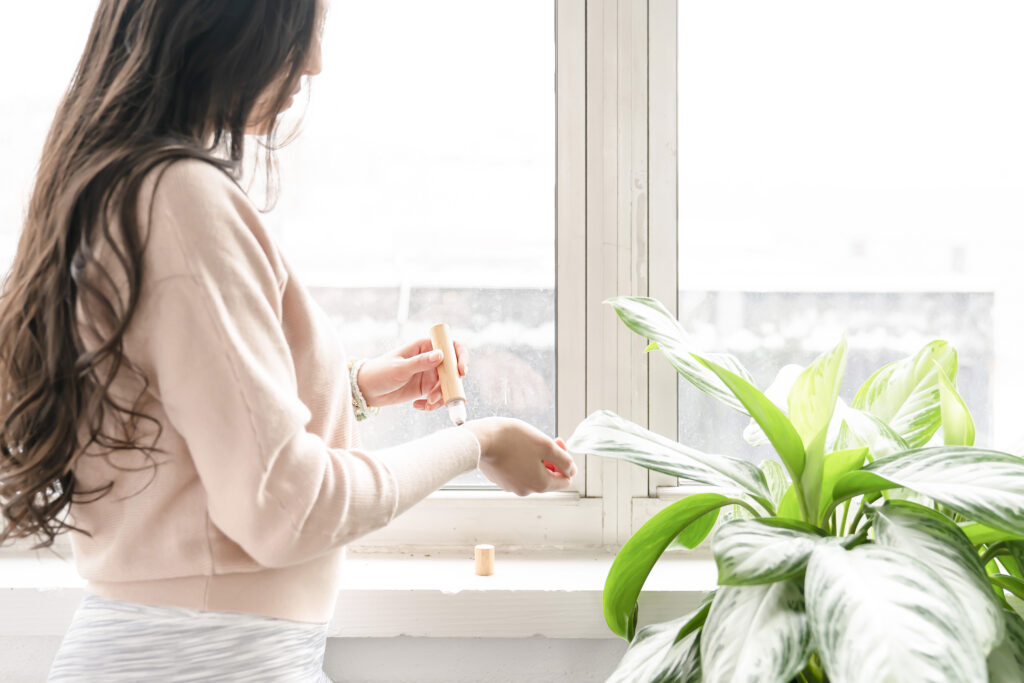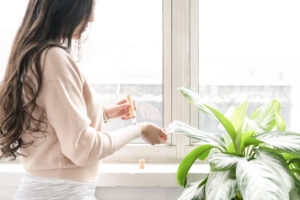Synthetic fragrance is everywhere. You’ll find it in skincare products, cleaning products, candles, air fresheners, laundry products and now even toys and stationery. As a clue, anything that smells overly sweet, fake, overpowering or nothing like its counterpart in nature is likely to be fragranced synthetically. If you’re starting out on the road to a more natural home wanting more natural products, ditching the fake smells is the perfect place to start.
So what’s the problem with synthetic fragrance?
We all love things that smell nice, so what’s the big deal if my daughter wants a set of candy scented pens or if I plug in a ‘Bondi Breeze’ air freshener in my home?
Unknown Ingredients
For me, the first issue is that we actually don’t know what the fragrance is made from. Fragrances are created in labs and often consist of hundreds of individual chemicals put together to create that perfect scent. To make matters worse there’s no easy way for us to find out exactly what these chemicals are as they are considered a trade secret. I firmly believe that we should know every ingredient that goes on or into our body and that most definitely also includes the products we inhale.
Petrochemicals
Secondly, it is believed that the majority of these chemicals that are used to create fragrances are derived from petrochemicals. Crude oil by-products isn’t exactly what you picture when purchasing your luxury, designer perfume is it?
Health Concerns
Fragranced products have also been associated with a large range of health issues. Migraines, headaches, respiratory issues, skin problems, hormone disruption and neurological issues are just a few. Due to these health concerns, some experts believe that fragrance is becoming the new second hand smoke.
Phthalates in Fragrance
One particularly nasty family of chemicals usually found lurking in synthetic fragrance are phthalates. They are used to make ingredients stick to a surface; for example to help nail polish stick to the nail, or as in the case of fragrance, to make the smell last longer. Phthalates are also known as plasticisers due to the fact that they can be used in plastic products to make them pliable and bendy (think of kids toys, food packaging etc.).
The big concern with phthalates is that they have the ability to mimic hormones in our bodies and disrupt our endocrine system. Now before you switch off and think that hormones are just all about menstrual cycles, the truth is that hormones actually control or influence most body functions in both women AND men. This is what concerns me most about the rapid rise of fragranced products marketed to children. Exposing their developing bodies to hormone altering substances is not something we should be doing.
Studies have also linked phthalates to lung issues, headaches, skin allergies, metabolism, behavioural issues, cancer and more.
The good news is that phthalates don’t last long as long in our bodies as other chemicals so by removing them from your home, you can start to see the benefits quickly.
How to avoid fake fragrance in the products you use:
Check your labels
Fragrance will usually appear on the ingredient panel as either ‘fragrance’ or ‘parfum’. Unless it specifies that the fragrance is derived from pure essential oils it will most likely be synthetic. Have a look at a few labels you have at home and see what you find.
Train your nose
As you begin to eliminate fake smells from your home you will quickly become pretty good at differentiating between a fake fragrance and a real fragrance. I used to love perfumes and scented candles, but these days I can hardly stand walking through department store fragrance aisles! You’ll also experience a renewed appreciation for the marvels of nature. At the end of the day, no lab can come close to replicating the incredible scent of a rose or the wafts of jasmine flowers in season.
Think of simple switches you can make in your home
One by one, find an alternative for each synthetically fragranced product you have in your house. Here are some simple ideas to get you started:
- Instead of using a plug-in air freshener, diffuse some pure essential oils.
- Opt for unscented body moisturiser when you run out of your fragranced one.
- Burn unscented candles in your home or you can even try to make your own natural beeswax candles and fragrance them yourself. This recipe is easy and fun!
- Throw out the little hanging tree car air fresheners and simply wind down the window and let in some fresh air! The enclosed space of a car makes it even more difficult to escape the effects of the synthetic fragrance. If you really need to smell something nice in your car, clip a wooden peg to the air vents and add a few drops of your favourite uplifting essential oil.
- Swap your perfume for a natural one. Nourished life has a great range of gorgeous, phthalate-free perfumes.
Want to learn more?
A fascinating documentary to watch with the whole family is the 2015 production, Stink. It follows a father’s quest to uncover why there are so many toxins and carcinogens legally hidden in products.





